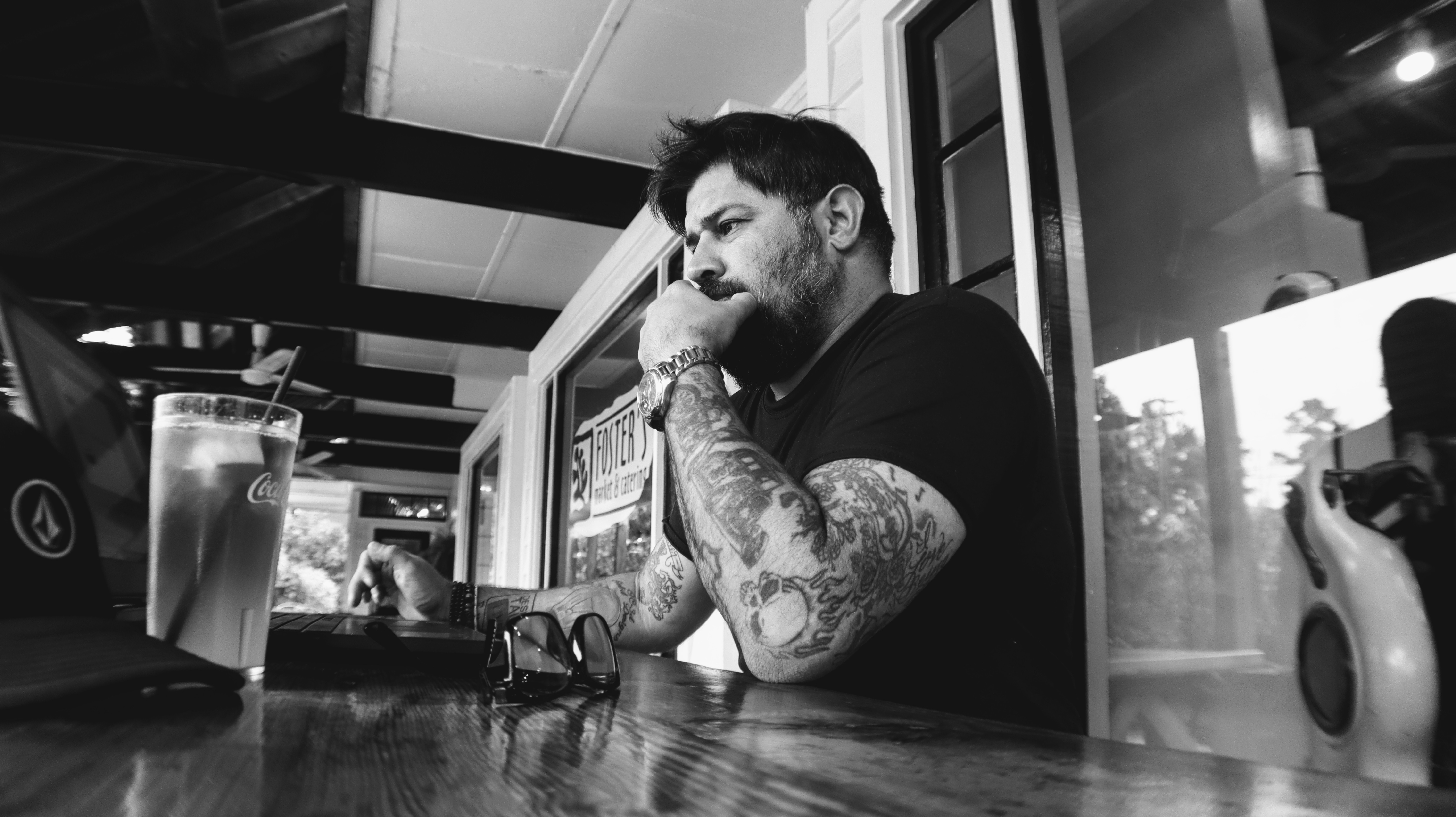
Stop Fixing Broken Systems — Start Rebuilding from the Foundation
- Joseph Haecker
- Oct 19
- 6 min read
By Joseph Haecker — Editor, Open To Work Social
The Illusion of Progress
Every era thinks it’s on the cutting edge.
We invent, iterate, and automate, telling ourselves that faster is better, that smarter systems equal progress. But what happens when the foundation itself — the thing we’re building on top of — is fundamentally flawed?
In business, in tech, in hiring, we’ve become obsessed with solving problems on the surface instead of asking the harder, foundational question:
“Was this system ever built for the world we live in now?”
When you patch a crumbling foundation, the cracks always come back.
And right now, in the job market, in hiring, in the way we measure human value, the cracks are showing again — this time, in digital high-definition.

The Patchwork of Innovation
We love innovation stories.
They make us feel hopeful.
But most innovation today isn’t creation — it’s accumulation.
Think about it: every “new” platform or system doesn’t replace what came before. It layers on top.
The résumé → became the online profile → became the LinkedIn post → became the algorithm → became the AI prompt.
Each layer promised a solution.
Each layer also made the system more detached from the original purpose: helping humans connect with opportunity.
Instead of starting fresh, we keep fixing the latest symptoms of the oldest problem.
And that’s what we’re watching happen again — right now — with OpenAI’s announcement that they plan to “solve” the jobs issue using AI.
The Resume: A 500-Year-Old Solution to a Problem That No Longer Exists
Let’s go back to where it started.
In 1482, Leonardo da Vinci wrote what history now considers the first résumé — a letter to Ludovico Sforza, the Duke of Milan. In it, Leonardo listed his capabilities: designing bridges, diverting rivers, building war machines. He wasn’t just applying for a job — he was telling a story of value.
It was a pitch, not a formality. It was human. Personal. Visionary.
Fast forward five centuries, and that same concept — summarizing your worth on paper — became the cornerstone of how we hire.
But here’s the absurdity: we’re still using the same framework in a world that no longer resembles Leonardo’s in the slightest.
The résumé was built for a time when:
People lived and worked in the same city their whole lives.
Job hunting meant walking into a building, shaking a hand, and leaving a paper résumé on a desk.
Relationships, not keywords, determined your worth.
Yet somehow, this outdated ritual survived the Industrial Age, the internet, social media, and now, artificial intelligence.
It’s been stretched, digitized, reformatted, and re-optimized — but never fundamentally reimagined.
The résumé, as we know it, is a fossil.
We’ve just given it prettier formatting and better file compression.
The Tech Cycle of Reinvention Without Renewal
Every decade, a new player arrives to “revolutionize” hiring.
Monster.com digitized the classifieds.
LinkedIn socialized the résumé.
Indeed aggregated the job boards.
AI promised to match people and roles with “unprecedented precision.”
Each time, we told ourselves we’d arrived at a smarter, fairer future.
But we never asked whether these systems were built on truth or tradition.
We just made the old machine more efficient.
And efficiency without empathy is how we end up where we are now:
with job seekers treated like data points and hiring managers buried in noise.
OpenAI’s “Jobs Solution”: Fixing the Wrong Problem
When OpenAI announced they plan to “solve the jobs issue,” my first reaction was curiosity. My second was skepticism.
Because “solving” jobs with AI is like trying to fix loneliness with more dating apps.
It doesn’t matter how advanced your matching algorithm is — if the system itself dehumanizes the participants, you’re not solving connection; you’re scaling disconnection.
The hiring system doesn’t need optimization.
It needs redesign.
The résumé is a symptom. The job board is a symptom. The disease is disconnection — between people’s stories and the opportunities meant for them.
And unless OpenAI is willing to challenge that foundation — to rebuild the system around human meaning instead of machine matching — we’re not evolving. We’re just automating dysfunction.
Efficiency vs. Empathy
Let’s be clear: technology isn’t the enemy.
It’s the shortcut we take with it that’s the problem.
When we optimize for efficiency, we lose sight of empathy. When we automate connection, we replace understanding with probability.
The systems we’ve built for hiring — ATS filters, résumé scanners, keyword sorters — all have one thing in common: they’re designed to exclude.
They filter out nuance, creativity, nontraditional paths, career gaps, and anyone whose story doesn’t fit the algorithmic mold.
But real hiring — real matching — has never been about perfection. It’s been about resonance.
That’s what storytelling does better than any résumé ever could.
It helps people see each other.
The Resume Can’t Comprehend Storytelling — or Personal Branding
The résumé can tell you what someone did.
It can’t tell you who they are.
It can show you skills. It can’t show you why those skills matter.
And it certainly can’t convey the emotional weight of experience — the risk, the failure, the resilience, the reinvention.
Social media, for all its flaws, has given us something résumés never could: a stage for humanity.
Personal branding isn’t vanity — it’s visibility. It’s a way of saying:
“This is what I’ve lived. This is what I’ve learned. This is how I add value.”
And yet, corporate hiring still treats personal branding as noise — when it’s the single most authentic expression of professional truth.
At Open To Work Social, we see it differently.
We believe storytelling is the missing link between who people are and how they’re seen. It’s the bridge between the human past of the résumé and the digital future of hiring.
Building from Scratch: What If We Started Over?
Let’s imagine, for a moment, that we could hit “reset.”
What if we built a hiring system from the ground up — one designed for a global, digital, human-first world?
It wouldn’t start with a résumé. It would start with a story.
It would look like this:
Every candidate gets to share their narrative — the why behind their work.
Employers search not just by skill, but by mission alignment, shared values, and human experience.
Visibility isn’t earned through algorithms but through authenticity.
Job seekers are celebrated as people — not profiles.
That’s not a fantasy. That’s Open To Work Social.
We built it as a place where your story is your résumé. Where your cover letter becomes your conversation. Where visibility is democratized through storytelling, not SEO.
Because if we truly want to fix hiring, we can’t keep sanding down the edges of a broken model.
We have to rebuild from the foundation up — with humanity at the core.
Why “Fixing” Feels Safer Than Rebuilding
There’s a reason we keep patching old systems instead of starting over: fear.
Rebuilding requires admitting the old system failed. It requires unlearning what we’ve spent decades mastering.
But fear of change is how innovation stagnates.
Imagine if architects refused to question old blueprints — we’d still be building castles with moats in the age of skyscrapers.
That’s what’s happening in hiring today. We’re clinging to castles when the world has moved to clouds.
We need courage — not convenience.
The Foundation of the Future: Human Storytelling
Storytelling is timeless. It’s the oldest form of connection — and the most scalable.
Before there were résumés, before there were job boards, there were stories told around fires, in guild halls, across generations. People didn’t ask for résumés. They asked for trust.
“Who can I count on?”
“Who’s done this before?”
“Who understands what I need?”
Storytelling answers those questions better than any bullet point ever could.
That’s why the most forward-thinking companies today are turning to narrative hiring — asking for videos, case studies, and personal essays instead of plain résumés.
They’re not just hiring skills — they’re hiring perspectives.
And that’s the movement we’re championing at Open To Work Social.
We take job seekers out of the algorithm and put them back in the story — where they belong.
The Courage to Rebuild
The next decade will test every institution built on 20th-century logic.
Education. Employment. Media.
All of it was designed for a slower, smaller, more localized world. But we live in a connected, creative, distributed one now.
The people who thrive in this new era won’t be the ones with the prettiest résumés or the most AI-optimized profiles.
They’ll be the ones who can communicate their story — clearly, confidently, and with purpose.
Because stories travel faster than résumés ever could.
The Final Word: What If We Started Over?
Imagine if OpenAI, instead of trying to “solve” hiring with AI, partnered with storytellers, creators, and community builders.
Imagine if their solution wasn’t based on fixing résumés — but on understanding people.
That’s the conversation we need to have.
Because real progress doesn’t come from patching old systems.
It comes from daring to build new ones — rooted in connection, empathy, and purpose.
At Open To Work Social, that’s exactly what we’re doing.
We’re not patching the past. We’re rebuilding the future — one story at a time.
Because at the end of the day, the résumé might summarize your experience.
But your story — your real, human, unfiltered story — is what makes you unforgettable.
The Future of Work Is Human — and It Starts with Your Story.
👉 Read more editorials on Open To Work Social




Comments